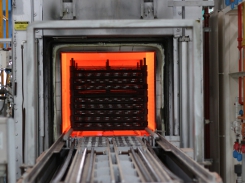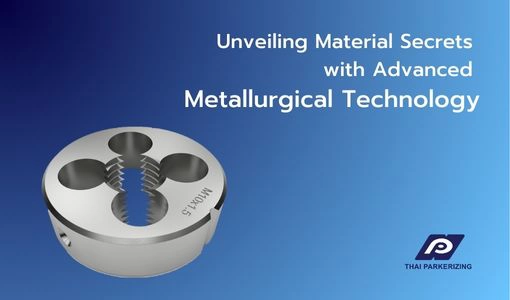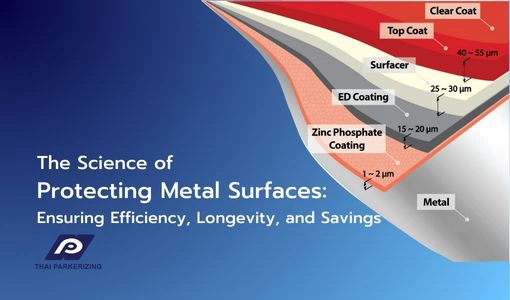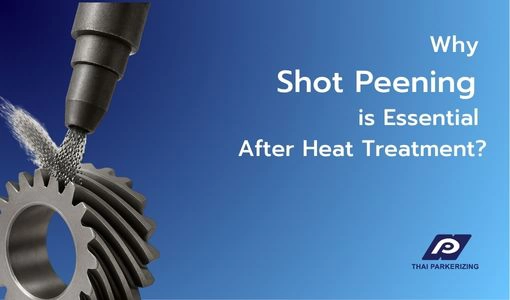- Corporate
- Chemical Products
- Chemical Controller
- Chemical for Paint Booth
- Coil Coating
- Degreasing and Cleaning chemical
- Heat&Cool exchanger (PLATECOIL)
- Hydrophilic
- Manganese Phosphate
- Nano-coating (Pallucid)
- Rolling Oil
- Rust Preventive Product
- Stearate Soap Lubricant/Dry-in-Place Lubricant (PULS)
- Trivalent Chromium/Non-Chromium
- Zinc Phosphate/Iron Phosphate
- Processing Services
- Laboratory Services
- Articles
- What's New
- Contact Us
- Privacy Policy
Zinc-Plated vs Galvanized Steel: What's the Difference?
13 December 2021
When it comes to metal, few materials are as versatile and important as steel. Steel is a tough and durable metal that can be used in many different ways. Steel is used for everything from construction material to consumer goods like pots and pans. There are two main types of steel: galvanized steel and zinc-plated steel. To determine which type you should use, you first need to know the difference between each type to make an informed decision!
Steel and Plating

Plating is a process in which a metal surface is covered with another metal to give it additional protection. For example, you may have seen aluminum cans that are silver on the inside. To plate steel, you need a more dense material than steel itself. Steel can rust when it comes into contact with water and oxygen. The corrosion process can cause the steel to weaken and eventually break. By plating the steel with another metal, you can protect it from corrosion and extend its life. Many materials can be used for plating steel, but zinc and aluminum are the most common.
What is the Galvanization Process?

The galvanization process is a way of protecting metal by coating it with zinc. Galvanization is a chemical process in which zinc ions are dissolved in molten zinc. The zinc is then spread evenly across the surface of the metal, where it cools and hardens to form a protective barrier. This corrosion-resistant coating is galvanized steel! You can brush or spray galvanizing on different surfaces like iron, steel, and other metals to provide them with additional corrosion protection. This creates an extra protective layer between the steel and the elements, so it doesn't rust or corrode.

Galvanized steel is a type of steel that has been galvanized by being dipped or brushed with molten zinc. The zinc coating provides an extra layer of protection to the underlying steel. Galvanization is what makes steel durable and long-lasting, so it's also important to help ensure that your products last as long as possible.
- The Process Of Making Galvanized Steel
The process involves taking regular steel and coating it with a layer of zinc. This can be done through dipping, spraying, or brushing the steel with molten zinc.
Hot-dip galvanizing is a type of galvanization that uses a higher temperature to apply the zinc coating. This increases the penetration of the zinc and makes it more durable. It's also a more efficient process, which means it can coat larger pieces of steel. The process of galvanization coats the steel with zinc and penetrates the metal, and forms a durable bond. This creates a corrosion-resistant layer that will protect the steel from rusting and corroding. - Advantages And Disadvantages Of Galvanized Steel
The galvanization process provides the steel with superior protection, which means it will be stronger and last longer than other types of steel. While paint can chip and damage the metal underneath over time, a layer of zinc cannot be easily removed or damaged. This makes galvanized steel very durable and strong.
However, because it is stronger, this type of steel is usually more expensive. It can also rust if the zinc coating is damaged. This means that the steel needs to be stored correctly, handled carefully, and maintained regularly. Galvanized steel may also have design limitations.
2. What is Zinc Plating?

Zinc-plated steel is a type of steel that has been coated with zinc. The zinc coating provides a layer of protection to the underlying steel. This type of steel is also known to be corrosion resistant.
- The Process Of Making Zinc Plated Steel
Zinc plating is a process that is very similar to galvanization, but it uses a different metal for plating. While galvanization uses zinc, zinc plating involves chrome as one of its plating materials. This can be done through dipping, spraying, or brushing the steel with molten zinc. The process of zinc plating not only coats the steel with zinc but also penetrates the metal and forms a durable bond. This creates a corrosion-resistant layer that will protect the steel from rusting. - Disadvantages and Advantages of Zinc Plated Steel
The advantage of zinc-plated steel is a better choice for construction materials, flooring boards, and other products that may be exposed in interior or mildly corrosive conditions. It is also considered lighter in weight. Energy and material costs for the zinc plating process are not costly, making it more affordable compared to other choices.
The disadvantage of zinc-plated steel is that it is not as durable as galvanized steel. The zinc coating can easily be damaged, which will then allow the steel to rust. Another disadvantage would be how the zinc plating process involves another layer of chromate for additional protection against corrosion. Repeated exposure to chromate can cause health issues in workers. Chromate also causes toxic waste and is harmful to the environment. Also, it is not as strong as galvanized steel, so it may not be the best choice for products that need to be very durable.
As mentioned above how chromium causes toxic waste and affects human health. There is another type of anti-corrosion coating that may be an option. Zinc flake coating is chromium-free, and is an ideal solution for products like fasteners, bolts, screws, nuts or switch plates because of its thin coating layer. Zinc flake coating typically contains a mix of zinc and aluminum flakes.
- The Process Of Making Zinc Flake Coating Products
Zinc flake coating products involve coating metal or steel with DELTA-MKS®, which is the main coating material. It provides cathodic protection with its zinc layer that acts to cathodically protect steel against corrosion. This works nearly the same way as galvanized steel, but zinc flake coating demonstrates better protection against corrosion than a typical galvanic zinc coating, as it withstands corrosion in salt spray tests for up to 1,500 hours.
- Advantages and Disadvantages of Zinc Flake Coating
Metal products that have undergone the Delta-MKS coating process will not produce hydrogen embrittlement that can potentially damage the structure leading to the products becoming very brittle when exposed to hydrogen.
Zinc flake coatings are environmentally-friendly. This won’t cause health issues in workers as the process does not contain chromium, both hexavalent chromium and trivalent chromium.
Zinc flake coatings, however, provide a higher degree of corrosion protection, as well as, an exceptional ability to withstand chemicals and high temperatures.
However, the biggest downside is zinc flake coatings, similar to hot-dip galvanizing steels, as both of them provide high corrosion resistance at high cost.
Related products
Tag :









